A vehicle’s brake system can help save drivers and passengers in many sticky situations. But do cars have brakes in the front and back? We researched for your convenience and consulted with different experts to give you the following answer.
All cars possess front and rear brakes. However, classic automobiles generally use different brake systems than most modern vehicles.
It’s important to know the difference between the different types of brakes to understand how they work. Knowing these various braking systems can also help car owners find the correct model during replacements. Keep reading as we talk about some brakes cars use. We’ll also talk about the front and rear brakes in automobiles in more detail.
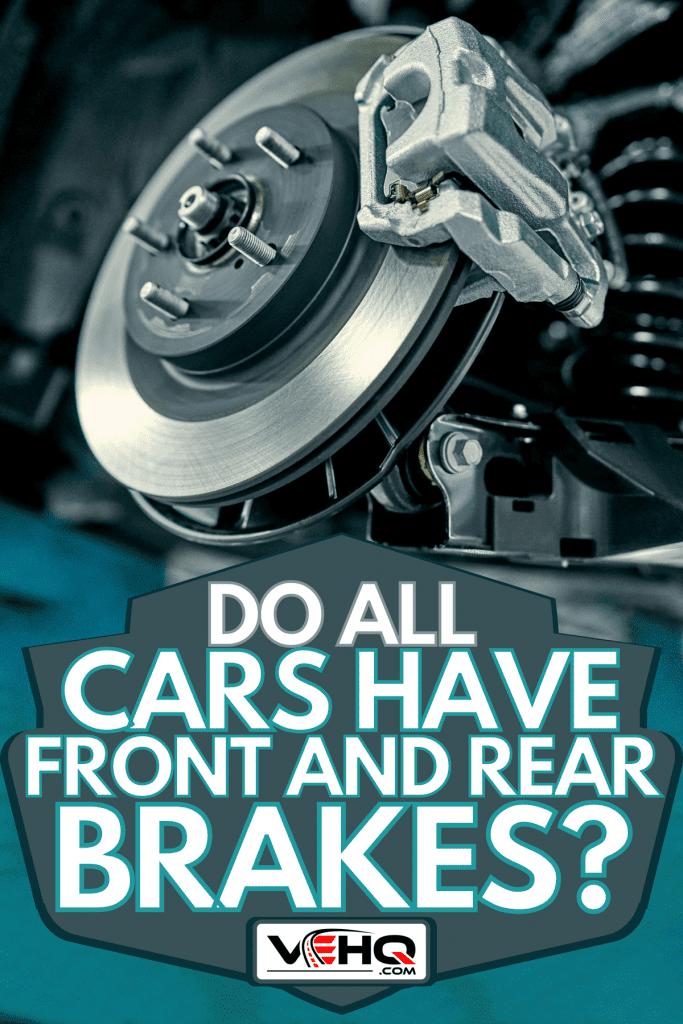
Do Some Cars Not Have Back Brakes?
All cars have front and rear brakes regardless of their manufacturing dates. But not every automobile possesses rear brake pads. So, it’s important to know the vehicle’s specific maker and model when replacing brake pads to reduce the risks of brake failures. You can also consult your carmaker to verify if the automobile you own uses brake pads.
Check out these replacement brake pads for the Toyota RAV4 on Amazon.
Is There A Difference Between Front And Rear Brake Pads?
Front and rear brake pads work differently despite functioning in the same system. Here’s how the location of the brakes matters in a typical vehicle framework:
- Front brakes: Handles and contains most of the applied force and heat from the stopping motion.
- Rear brakes: Offers stability to prevent rollovers and spin-outs.
Where Are The Brakes In A Car?
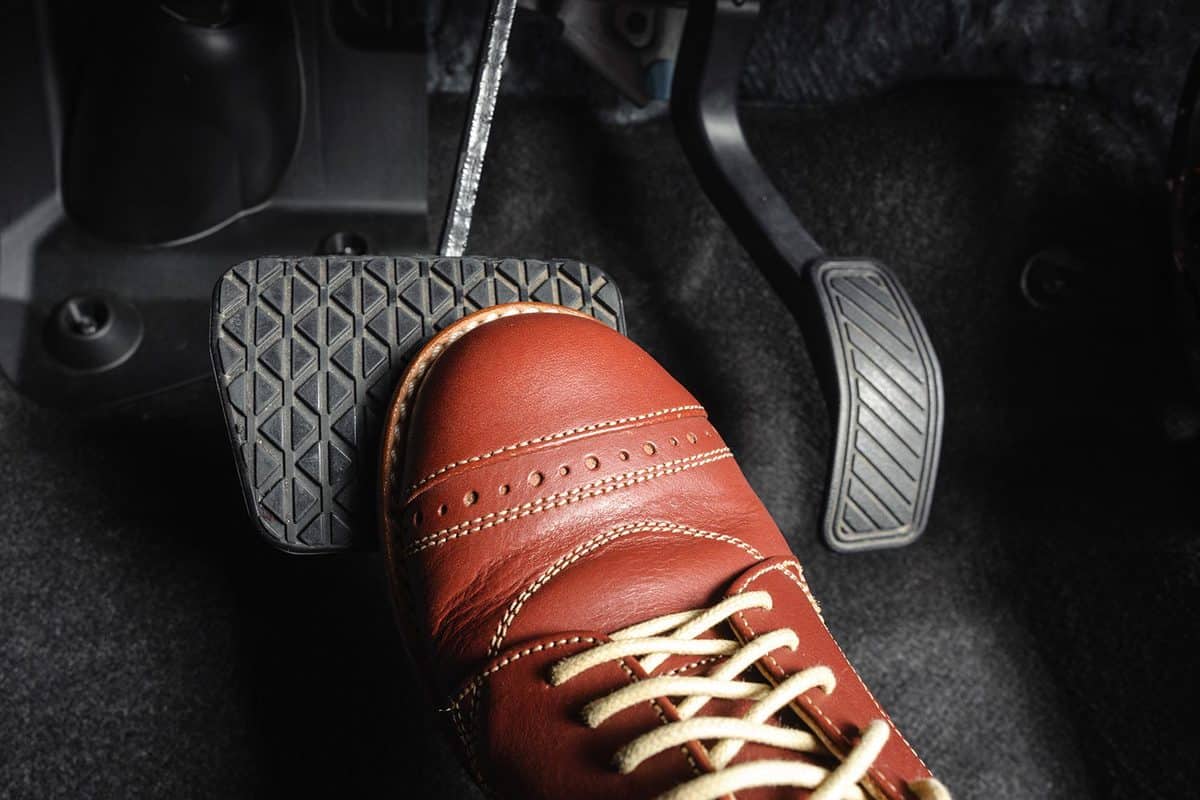
Every car generally has brakes connected to the front and rear wheels. But the difference is the type of brakes used for these locations.
Modern automobiles often have disc brakes on all four wheels. On the other hand, some vehicles will have disc brakes for the front wheels and drum brakes for the back. As for vintage cars, these models usually possess drum brakes for the front and rear.
What Is The Difference Between Drum Brakes Vs. Disc Brakes?
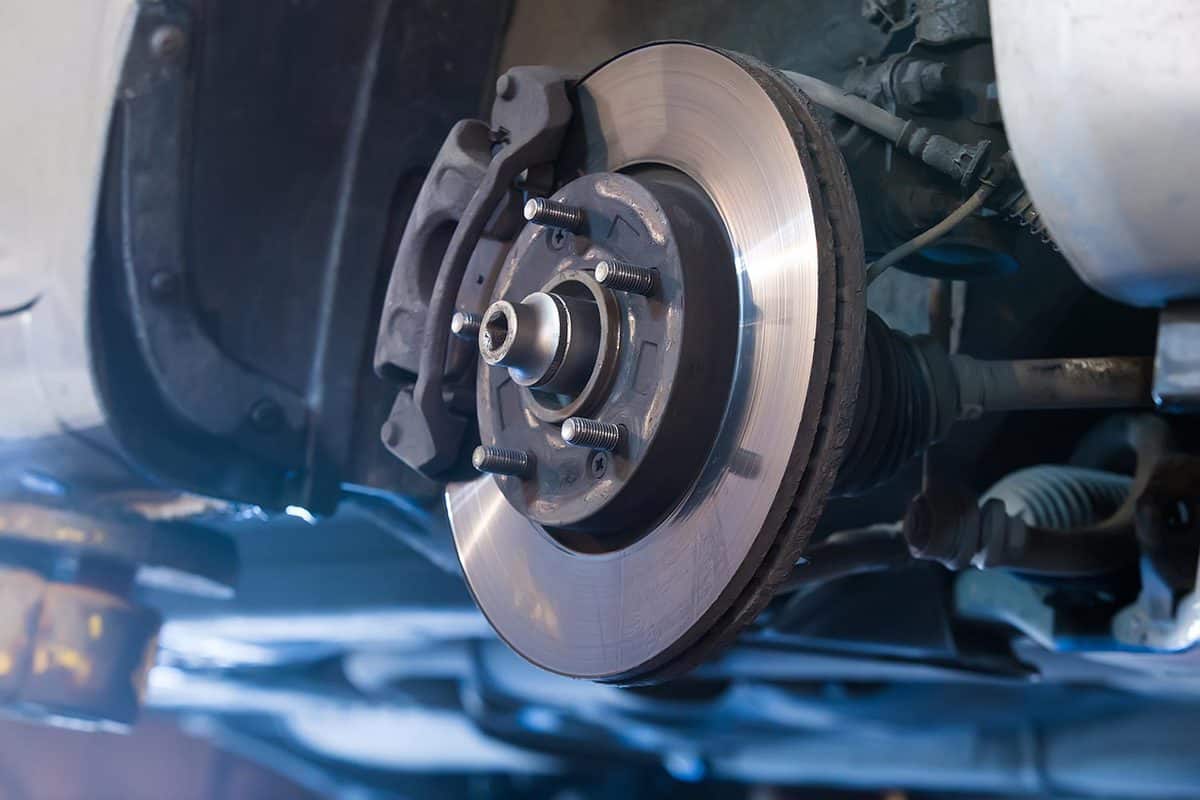
Although drum and disc brakes serve a similar purpose, these hydraulic pressure systems work differently to provide sufficient stopping power. In this section, you’ll learn more about how these braking systems work.
Drum Brakes
Classic automobiles, and some modern pick-up trucks, use drum brakes to provide sufficient stopping power to the wheels. It’s often easier to install a parking brake to a drum brake system than its disc counterpart.
These brakes don’t typically use brake pads to deliver friction to the wheels. Instead, drum brakes use calipers that act as clamps. Once activated, the clamps press against the rotor, causing stopping the spinning drum.
However, many car manufacturers no longer rely on drum brakes when developing their vehicles. For instance, drum brakes require frequent cleaning, unlike disc brakes and their self-cleaning capabilities. Plus, drum brakes are often prone to grabbing and pulling, which can put the car’s driver and its passengers at risk of accidents.
Nonetheless, vintage car enthusiasts may still want to preserve the service life of their vehicles for as long as possible. This operation may demand the replacement of a car’s drum brakes, which is possible to complete with proper results using DIY techniques.
Watch the video below to learn how to replace drum brakes on a vehicle:
Check out this replacement drum brake kit on Amazon.
Disc Brakes
Most vehicles now use disc brakes instead of drum brakes. These braking systems use calipers mounted onto the wheel assembly to stop automobiles upon pushing the brake pedal. The typical disc brake setup contains these parts:
- Bleeder screw
- Piston seal
- Piston(s)
- Anti-rattle clips
- Rotor
- Dust boot
- Caliper
Furthermore, disc brakes come in two types, which are:
- Floating: Also called a sliding system, a floating disc brake uses a caliper to drive the inner brake pad onto the disc.
- Fixed: The caliper in a fixed disc brake doesn’t move but stays fastened to its bracket or spindle.
Despite the differences in how these two types of disc brakes work, these car-stopping systems usually work better than their drum brake counterparts. Plus, disc brakes often provide a more powerful stopping prowess, better heat management, and lighter construction.
You can also read our post on the different types of brakes to gain more insight about these systems.
Do Cars Use All Four Brakes?
Stepping on the brake pedal will activate the four brakes for each wheel. Many cars will use hydraulics to push and pull the brakes to engage and disengage them.
Pushing the brake pedal will cause a pushrod to apply the right force to the master cylinder’s piston. This motion will allow the system to make brake fluid flow into the pressure chamber. The additional pressure will cause the pistons on each brake to activate, stopping the vehicle.
The time it takes to send the signal from the pedal to the brakes is near-instantaneous to allow a moving automobile to stop almost immediately. Many vehicles will have stopping systems that trigger after less than a second of pushing their brake pedals.
Find out more about how car brakes work by watching the video below:
How Do I Know If I Need Front Or Rear Brakes?
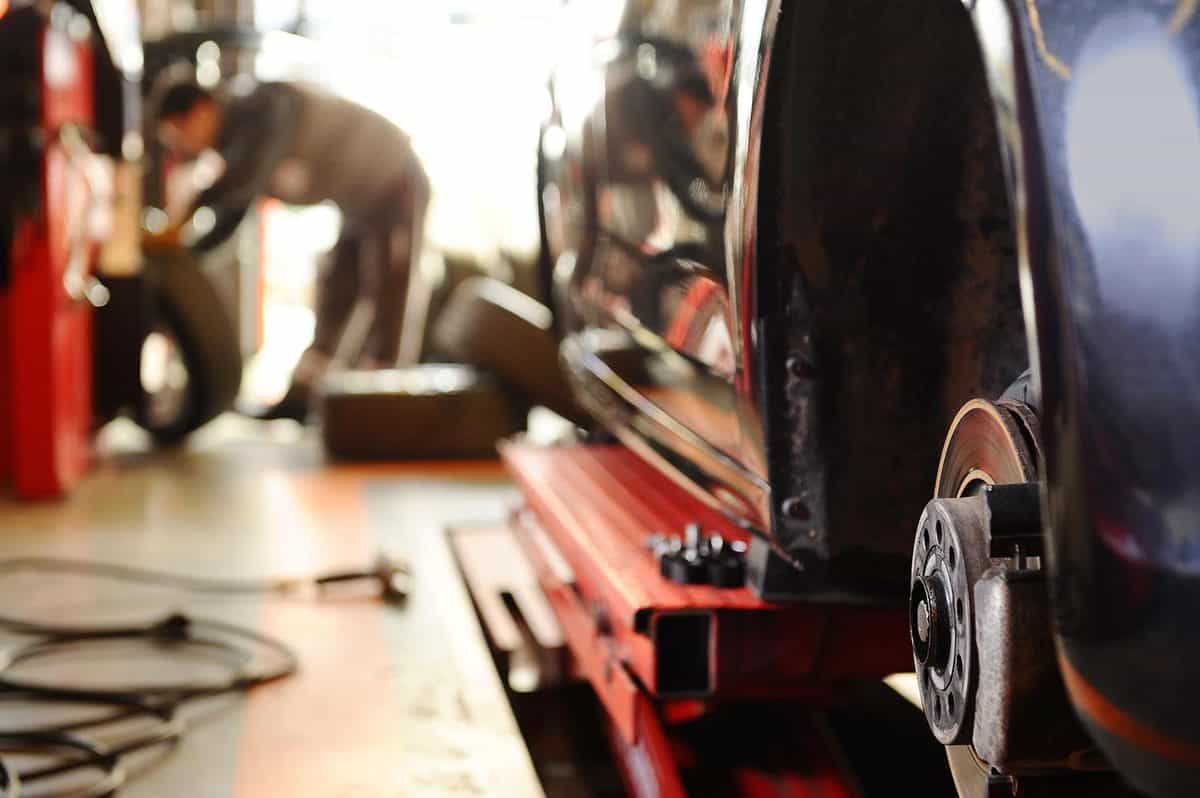
Brake replacement often demands careful attention to certain signs. Take note of the unlikely events that might be happening to your cars, such as unknown noises, scents, and visuals.
Before undertaking any troubleshooting operation for your vehicle, make sure that you turn off its engine. Furthermore, ensure that the car’s hand brake is functioning well, and you put an object adjacent to the tires to prevent the automobile from rolling.
Do those precautionary steps first because you may need to crawl under your vehicle’s chassis. Failure to practice those measures may put you at a high risk of experiencing accidents.
After finishing the preparations, grab a rotor micrometer. Use this tool to measure the thickness of the rotors on each brake. Rotors that are thinner than usual need immediate replacements.
Check out this rotor micrometer on Amazon.
Additionally, you can use these other techniques to verify the location of faulty brakes:
Listen to Identify Unknown Racket
It might be advisable to have another person with you for this method. With you in the driver seat, press the brake pedal lightly. Then, the individual who’s currently with you will go around the vehicle, searching and listening to the source of the noise.
The location of the noise should verify the malfunctioning brake. You can also read our post on hissing noises from car brakes to learn more about this problem.
Check the Service Light
Cars with disc brakes often have sensors attached to them. Triggering these components should enable the service light on the vehicle's dashboard. Moreover, the rear brakes are usually the source of the issue.
As a careful driver, you should have your vehicle towed and checked by certified technicians the moment you experience signs of brake failures. It’s quite tough to determine the exact moment when your car’s brakes will give out. Avoid hazardous incidents by having your automobile serviced and promoting road safety.
Should Rear And Front Brakes Replace?
Like switching wheels, it’s also possible to interchange your vehicle’s brakes, specifically the brake pads and rotors. However, some dangers exist if you proceed with this operation. These hazards are present because of the sizes of the pads and rotors.
For instance, the dimensions of the front calipers are different than the ones used for the rear brakes. The same concept goes for the wear and tear experienced by each brake pad; oftentimes, the front brakes will wear out faster than the rear units.
Replace your brakes instead of switching their positions. Make that investment to prevent accidents while you’re driving your car.
Check out this brake pad replacement kit on Amazon.
How Much Should A Full Brake Job Cost?
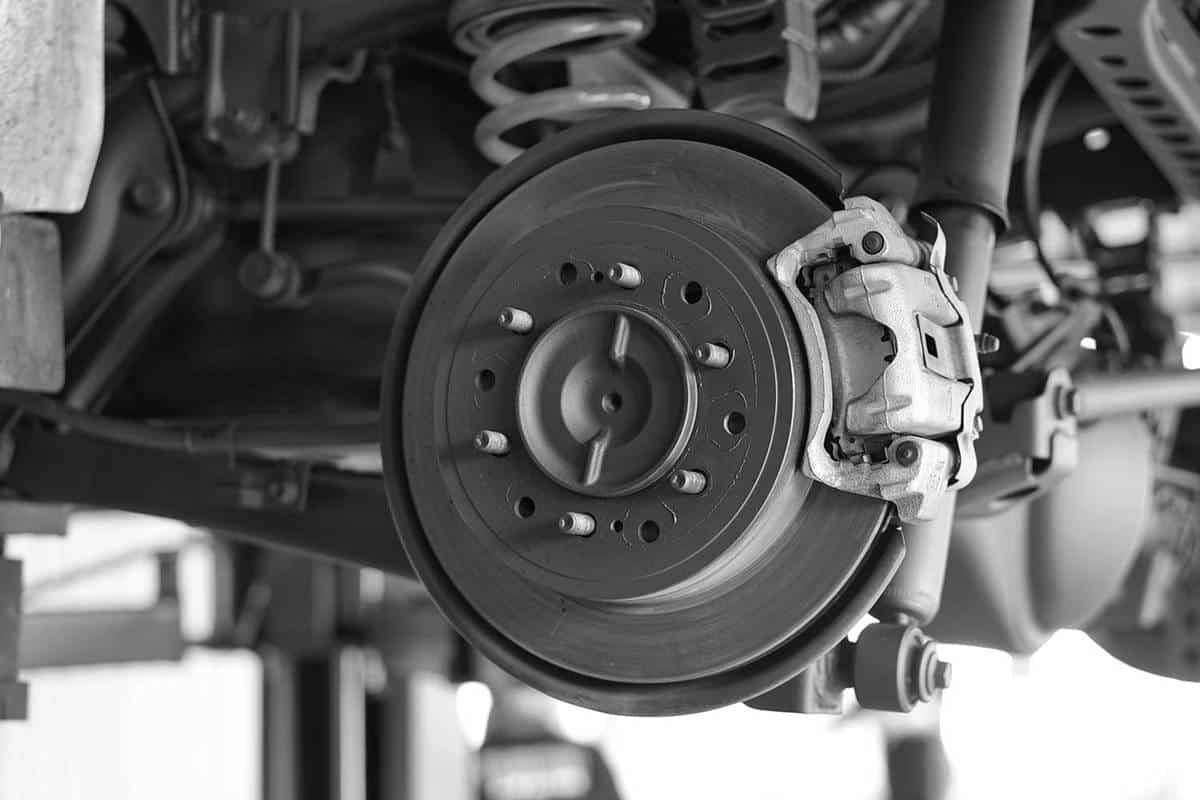
Professional services cost $115 to $270 per brake that needs replacing. Automobile repair companies typically charge their customers $35 to $150 to cover the replacement fees for each brake. The rest of the expenses will be for the employed assistance.
Take note that the overhead can increase based on the parts in need of substituting. Here are some examples:
- Rotors: $150 to $200
- Calipers: Up to $130 on average
- Entire brake system replacement: $1,000 or more
Vehicle owners may choose to purchase the parts themselves before employing the services of certified car repair experts. If so, the overall expenses for the operation may decrease.
Final Words
Every car manufactured possesses front and rear brakes. Although some cars use different braking systems, their purpose is still to stop running automobiles with human intervention. Vehicle owners should care for their braking systems frequently to reduce the risks of road accidents.




